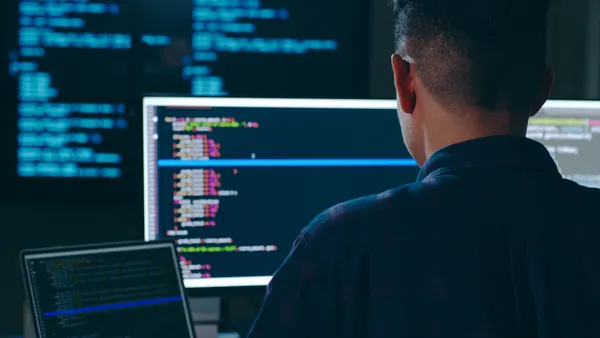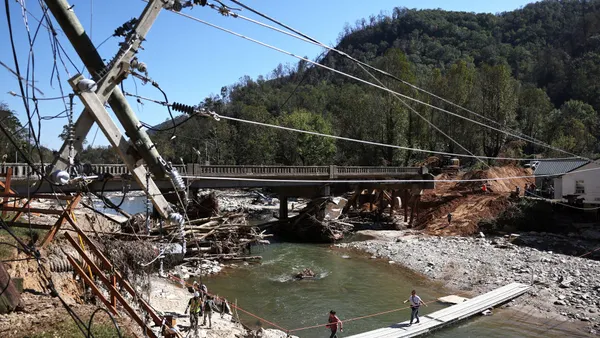Dive Brief:
- Scientists at Nanyan Technological University in Singapore have developed two robots that can work in unison to 3D print a concrete structure, according to news release, paving the way for collaborative 3D printing on a larger scale in the future.
- Printing large concrete structures requires even larger printers, which can be a challenge on space-constricted construction sites. As an alternative, the NTU researchers developed a "swarm printing" model where several, small robotic printers can communicate with each other to simultaneously print a larger structure.
- A computer maps out the design and assigns specific parts to each robot, according to the announcement, while an algorithm ensures that the robots do not collide with each other. The robots move into place, printing each part with precise alignment and overlapping joints. A specially formulated cement mix must be blended evenly and in synchronization to produce the proper consistency, the researchers said. In one test, a structure took two days to harden and a week to achieve full strength.
Dive Insight:
Researchers have been investing time and money into 3D printing and robots for years, but this development marks the melding of the two technologies. Professor Chua Chee Kai, executive director of the Singapore Centre for 3D Printing, said in the press release that additive manufacturing can be advanced even further when combined with other technologies like robotics, artificial intelligence, materials science and green manufacturing techniques. He added that his research team will continue to work to integrate more robots into the process so larger structures can be printed, optimize the printing algorithm for consistent performance and tweak the material so it cures faster.
Robots already are making an impact on construction sites. Tybot, which recently took home top honors in the inaugural AGC-Autodesk Innovation Awards, is a robot that ties rebar on bridges in half the time it takes a human, speeding up work, reducing costs and preventing potential worker injury from the task.
Construction Robotics’ semi-automated mason robot, or SAM, also dramatically speeds up production times. Hoar Construction, for example, recently used the robot on a Roanoke, Virginia, project, where it installed 70%, or 250,000, of the project’s bricks. The same make of robot also laid the bulk of the bricks on a University of Nevada, Reno building.
Other sophisticated robots are in the works. Japan’s Advanced Industrial Science and Technology Institute recently unveiled HRP-5P, a humanoid bot prototype that can install drywall independently and accurately.












